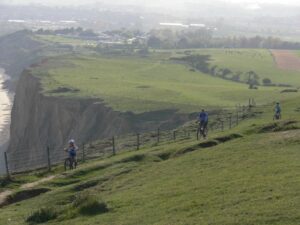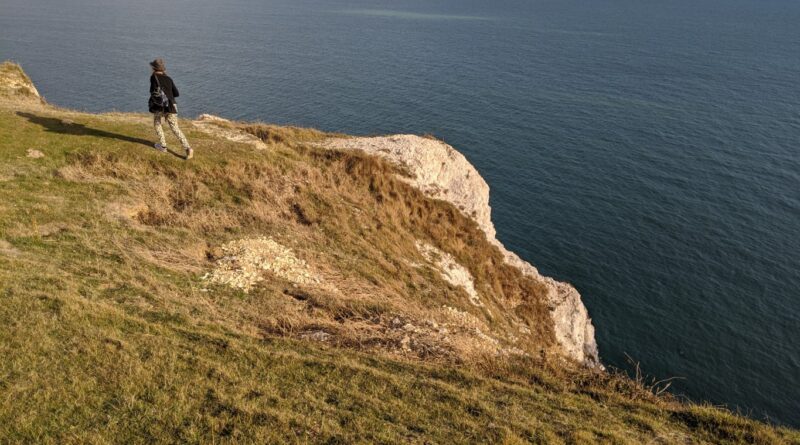A fence against common sense
- Complaining about the Mainland - 17th August, 2024
- New island designation – is it just greenwash? - 26th April, 2024
- Police and Crime Commissioners – a solution or a problem? - 21st April, 2024
It is a sad fact that every now and again on our beautiful Island people die when they fall from the cliffs – sometimes by accident, sometimes on purpose. In separate incidents in the last few years two women tragically died after going over a cliff edge on the Isle of Wight. In both cases the coroner remarked that she would welcome more signs in such locations promoting the work of the Samaritans.
In a recent case there was discussion about whether landowners on the Isle of Wight ought to be more proactive in fencing off their clifftops. The outcome of that, if any, is yet to be seen. Meanwhile, let’s take a look at that idea.
The first and weakest objection to the suggestion of fencing off the clifftops is that it is a very expensive proposal. And once you’ve agreed that erecting a fence is necessary, you also by default agree that inspecting, monitoring and maintaining it is also necessary, so it’s not just a one-off cost, it continues for ever.
Let’s take the distance from Freshwater Bay to the Needles Landmark Attraction – 6.5km of fencing at, say, £5 per metre, is £32,500. And given that everybody who goes up there pays exactly nothing for the privilege, that means the National Trust will have to find the money that could have paid for a countryside ranger for a year, just to fence off that little bit. I’ll let you do the sums for the much longer stretch of cliffs from Freshwater Bay to Blackgang but trust me, it’s a massive heap of cash.

The second and more pertinent challenge to this concept is effectiveness. The mental health challenges we face as a society are deep and troubling. Our responses to those issues are too often superficial, or even contrary. Is it really the lot of farmers and conservation charities to spend untold thousands on fencing, when at the same time our mental health services are unable to meet the demand upon them? Perhaps we could think of a better way to spend that money than on barbed wire and peeled logs. And in any case, the blunt truth is that it doesn’t work. The other clifftop place on the Island where people are known to have tragically taken their lives is Culver – another National Trust property as it happens. That cliff is fenced all the way – and yes, signs and messages of support are up there – yet still there is every now and again another heartbreaking job for the coastguard and rescue services as the fence proves itself inadequate to the task.
Finally, there is a greater point, far from legal and financial argument. Do we actually want to fence off our wild places? Can we not be trusted to have just a few open, unfenced, untamed scraps of wilderness where we are entitled, if we so choose, to run free and play, to escape and take our chances, even that very last chance? If not, then so be it. But if so, we should consider what we have lost.

